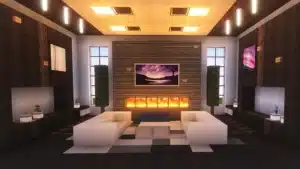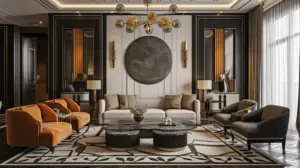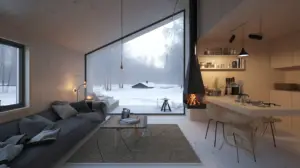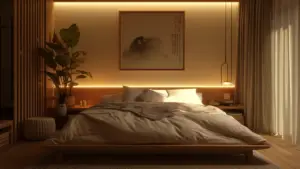Free Shipping On All Orders
15 Medieval Interior Design Ideas 2024 You Will Love
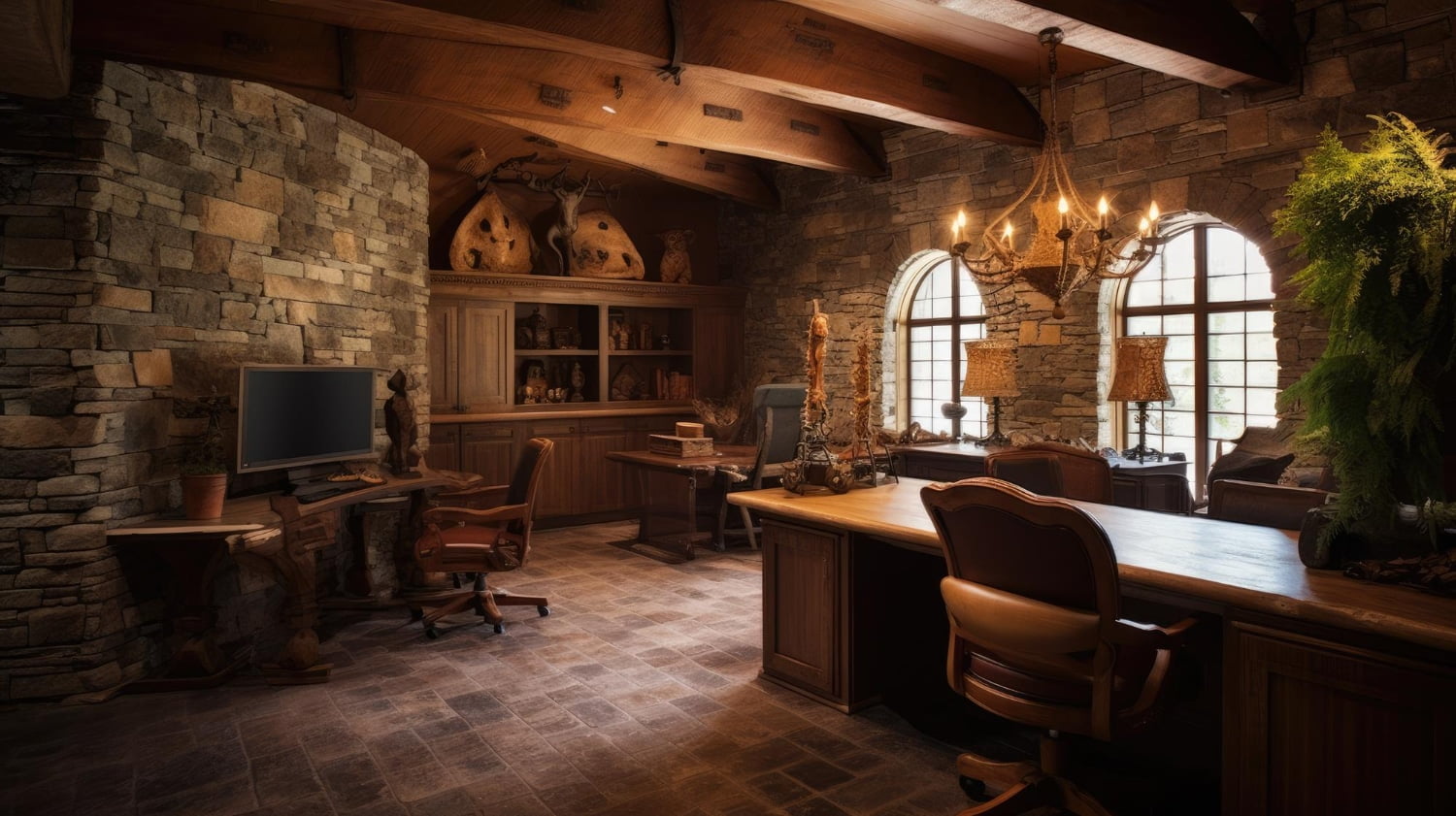
Medieval interior design is a fascinating subject, offering a glimpse into the lifestyles and aesthetics of a bygone era. Spanning from the fall of Rome in 476 to the 15th century, information about the decoration of interiors during the Middle Ages is relatively scarce. Still, we can piece together insights from surviving objects and illuminated manuscripts to form a vivid picture of the tastes and styles prevalent during this time.
As Europe emerged from the turbulent early medieval period and began to flourish, the influences of luxurious Near East living – brought back by the Crusaders – began to shape home designs. Castles slowly evolved into manor houses, and with this evolution came a transformation in interior decoration. Rich fabrics, ornate architectural elements, and the use of color all contributed to the unique visual language of medieval design.
Key Takeaways
- Medieval interiors offer a rich and intriguing historical perspective, drawn from various sources like artifacts and manuscripts
- The influence of Near Eastern luxury shaped the development of European manor houses during the Crusades
- Architectural elements, furnishings, and decor all contributed to the unique visual language of this era
Historical Context
When I think of medieval interior design, it takes me back to the period between the fall of Rome in the 4th century and the beginning of the Renaissance in the early 16th century. This era, also referred to as the Middle Ages or the Dark Ages, is marked by distinct architectural and design elements that were both functional and artistic.
In my research, I’ve found that the medieval interior design mainly focused on the use of stone and rich wood accents. Walls and floors were often adorned with dramatic stone textures or decorative wood paneling. Stone was not only used for aesthetics, but it also provided insulation and structural support in large castles and buildings. I particularly admire the intricate craftsmanship and attention to detail that are still evident in many surviving examples from this period.
One of the key features I’ve noticed in many medieval interiors is the presence of a prominent stone fireplace and hearth. This feature served as a central gathering point, a source of warmth, and a spot for cooking within the home. The fireplace also added to the overall ambiance of the room, making it feel more comfortable and inviting.
During the medieval era, furniture was often heavy and made of solid wood, with minimum adornments and focus on functionality. In the 13th and 14th centuries, the wardrobe evolved into a combined workroom and storeroom, housing items such as clothing, textiles, and household linens. This room was furnished with sturdy tables and chairs, as well as storage chests for added functionality.
It’s important to note that medieval interior design was heavily influenced by the relentless religiosity of this era. Christian symbolism and ornate religious iconography were prevalent in the decoration of churches, monasteries, and even homes. Stained glass windows, frescoes, and ornate altarpieces were some of the ways in which religious themes were incorporated into everyday living spaces.
As a lover of history and design, I find the medieval era fascinating in its combination of practicality, artistry, and reverence for the spiritual. Despite the many challenges faced by people during this time, they clearly managed to create lasting and substantial contributions to the world of interior design.
Architectural Elements
As a medieval interior design enthusiast, I find it fascinating to explore various architectural elements that define this style. In this section, I will discuss some of the most prominent elements such as vaulted ceilings, Gothic arches, and stone walls.
Vaulted Ceilings

One of the most iconic features in medieval architecture is the vaulted ceiling. These high, arched ceilings not only provided a grand appearance but also contributed to the structural integrity of the building. Vaulted ceilings were typically constructed using stone or brick, which helped to distribute weight evenly and allowed for larger, open spaces.
The most common types of medieval vaulted ceilings include:
- Barrel vaults: These are the simplest type of vault, resembling a continuous curved ceiling.
- Groin vaults: This type of vault is formed by the intersection of two barrel vaults.
These vaulted ceilings are an essential architectural element to include in medieval interior design, as they give a sense of grandeur, height, and spaciousness to any space.
Gothic Arches

Another key characteristic of medieval interior design is the Gothic arch. This type of arch is characterized by a pointed, triangular shape, and it was commonly used in everything from doorways and windows to bridges and vaults. Gothic arches not only have a distinctive visual appeal but also provide better structural support than traditional round arches.
Some popular variations of the Gothic arch include:
- Lancet arches: These are tall, narrow arches with a steeply pointed apex.
- Ogee arches: This type features two curves, one concave and one convex, creating an S-shape.
Incorporating Gothic arches into a medieval interior design scheme adds a sense of elegance and drama to the space while staying true to the historical style.
Stone Walls

Stone walls are another fundamental aspect of medieval architecture and design. In the Middle Ages, buildings were primarily constructed using local stone, which provided a strong, durable, and visually striking foundation for interior spaces.
For an authentic medieval interior design, consider incorporating exposed stone walls or using stone-like materials such as decorative stone wallpaper or realistic cultured stone. These options can help create the look and feel of a medieval-style room without the need for actual stone walls.
In summary, embracing elements like vaulted ceilings, Gothic arches, and stone walls can truly capture the essence of medieval interior design. Incorporating these architectural features will transform any space and transport you back to the historic and captivating world of the Middle Ages.
Materials and Textiles
Wood

In medieval interior design, wood played a significant role as a core material. It was used for various purposes, such as constructing furniture, decorative panels, and even entire rooms. Oak, in particular, was highly popular among craftsmen because of its strength and durability. I have seen examples of intricately carved oak pieces that featured designs of animals, foliage, and religious symbols.
One thing that set medieval woodwork apart was the heavy use of wooden beams and trusses in ceilings. These wooden structures not only provided support but also gave the interior a distinctive look. I’ve observed that many medieval structures retained their original look due to the longevity of these wooden frameworks.
Fabrics

Fabrics were an essential aspect of medieval interior design. In my research, I have noticed that textiles were often used to cover walls, especially tapestries. Some of the notable medieval centers of tapestry manufacture were Paris and Arras. These tapestries served not only as decoration, but also provided insulation and demonstrated the wealth and status of the owner.
It was common to find imported textiles, like oriental textiles brought through Venice and Genoa, being used in luxurious European interiors. In one striking example, I learned that the first piece of Chinese porcelain, introduced by Marco Polo, ended up in St. Mark’s treasury in Venice.
In addition, fabrics were used for upholstery and window treatments. Medieval fabrics included materials such as wool, silk, and velvet, which added richness and texture to the space. I have seen that patterns like damasks, brocades, and embroidered motifs were also prevalent throughout the medieval period.
Lighting and Windows
Candles

In medieval interior design, lighting played a crucial role in creating a warm and cozy atmosphere. I would typically use candles as the primary source of light, as they were the most common and easily accessible option during the medieval period. Candles were usually made from beeswax or tallow, which produced a steady and bright flame. I might also use various candle holders, such as chandeliers, candelabras, and wall sconces, to add an artistic touch to the space while also illuminating it.
Stained Glass

For windows, stained glass was a popular choice that I would frequently incorporate into my medieval interior designs. The vibrant colors and intricate patterns of stained glass windows added a touch of beauty and elegance to the space, while also allowing natural light to filter in. I would often use religious or heraldic themes in the designs of the stained glass, reflecting the strong influence of religion and nobility during the medieval period. Additionally, the use of stained glass in windows helped regulate the amount of light entering the room, creating a soft and diffused glow that contributed to the overall ambiance.
Furnishings and Décor
Furniture

In medieval interior design, furniture plays a significant role in creating an authentic atmosphere. As I explored various sources, I found that most pieces used during this period were made of heavy, dark wood such as oak or walnut. This wood was often intricately carved with Gothic motifs, and larger pieces, like beds and wardrobes, often featured ornate decorations. Thrones and chairs were designed with high backs and armrests for comfort, while tables typically had thick, sturdy legs and long rectangular tops.
When selecting furniture for a medieval-inspired space, I would recommend looking for pieces that feature:
- Dark wood, such as oak or walnut
- Ornate, gothic carvings
- High-backed chairs with armrests
- Thick, sturdy table legs
You can find such furniture at specialized antique stores, online platforms like Etsy, or even have it custom made by skilled woodworkers.
Tapestries
Tapestries were a vital part of medieval interior design, as they served both decorative and practical purposes. Not only did they add a touch of color and artistry to the otherwise plain walls, but they also provided insulation against drafts and dampness in large stone buildings.
When adding tapestries to your medieval-themed room, consider:
- Choosing designs with intricate patterns and rich colors, such as deep reds, blues, and greens
- Looking for tapestries featuring popular medieval themes like knights, hunting scenes, or religious imagery
- Hanging tapestries on large, open wall spaces or behind furniture
To create the most authentic atmosphere, I suggest seeking out high-quality, hand-woven tapestries as opposed to printed fabrics. You can find them at select antique shops, online retailers, or in specialty stores that focus on historical reproductions and home decor.
Color Palette
When it comes to medieval interior design, I find it important to select a color palette that complements the overall atmosphere and aesthetics of the space. Rich, deep colors were often used in medieval times to represent wealth and prestige. Some of these colors include dark and warm hues such as deep reds, greens, blues, browns, and grays. Additionally, lighter shades can also be incorporated to balance the color scheme and create a more inviting environment.
For a more authentic representation of the medieval era, it may be worthwhile to consider including natural pigments commonly used during that time. Artists in the Middle Ages typically sourced their dyes from plants, minerals, and even insects. Some notable pigments include ultramarine (derived from the semi-precious stone lapis lazuli), vermilion (a red pigment created from the mineral cinnabar), and ochre (an earthy pigment sourced from clay).
Moreover, in creating a medieval-inspired color palette, I find it advantageous to take inspiration from existing Gothic architecture and art. Stained glass windows, illuminations in old manuscripts, and preserved frescoes often showcase a vibrant array of colors, serving as excellent reference points for a medieval-themed interior.
Influences and Adaptations
Religious
When discussing medieval interior design, one of the significant influences is religious architecture and decorative elements. Monasteries, abbeys, and churches served as inspiration for residential designs, as they exhibited intricate details and solemn materials.
I noticed that the use of stone vaults and arched openings were common, providing a robust and unified atmosphere. Additionally, stained glass windows were a prominent feature in religious settings, often depicting biblical scenes or stories in vivid colors. These windows allowed light to enter the space, creating a mystical aura within the interior.
Secular
On the other hand, secular medieval interior design was equally fascinating. As a result of many households needing to be warm and secure, having a hearth with a hood for cooking and heating purposes became standard. The furniture was typically made of rough, carelessly planed wood, prioritizing function over form.
In my observations, I also noticed that medieval homes often utilized massive forged lamps to provide light, adding to the bold and dark aesthetic. Dense and heavy fabrics adorned the interiors, sometimes sporting colorful patterns. It was not uncommon for tapestries featuring elaborate designs or scenes from literature to be hung on walls, providing insulation and visual interest.
As I have shown, medieval interior design was heavily influenced by both religious and secular factors. The architecture and decorative elements borrowed from monastic settings, as well as the functional and durable choices made in secular homes, help capture the distinct essence of this fascinating design period.
Frequently Asked Questions
What are the key elements of medieval interior design?
Key elements of medieval interior design include heavy wooden furniture, tapestries, stained glass windows, and wrought iron accents.
How can I incorporate medieval design into a modern home?
To incorporate medieval design into a modern home, try adding small touches like a wrought iron chandelier or a tapestry wall hanging. Use neutral colors and minimalist furniture to balance out the medieval elements.
What are some common color schemes for medieval interior design?
Common color schemes for medieval interior design include deep reds, blues, and greens, as well as gold and other metallic accents. Neutral colors like beige and brown can also be used as a backdrop for bolder medieval elements.
If you liked this post about medieval interior design, don’t forget to follow us on Pinterest so you don’t miss any more interior design news!


